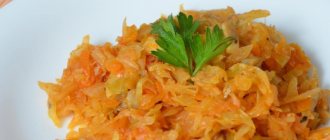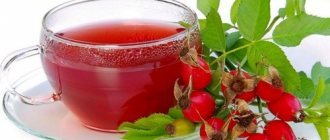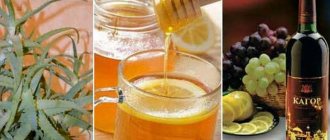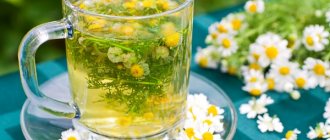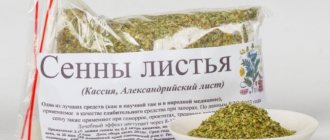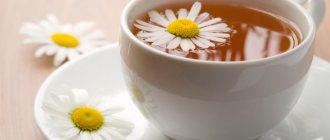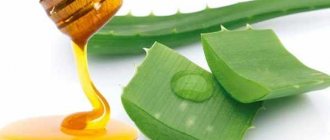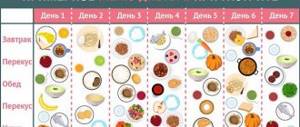Half of the world's people suffer from gastritis. If you are reading these lines, you are probably one of them. Meanwhile, salvation from the disease is literally under your feet! The invisible weed plantain for gastritis of the stomach is a cheap and effective help available to everyone.
Plantain is valued for its hemostatic and antiseptic properties. As children, we applied leaves to wounds to heal them quickly. A lesser known, but very valuable property of plantain is the ability to restore the gastric mucosa in a patient with gastritis.
Use of plantain for gastritis
Plantain is a perennial herb found everywhere: in vacant lots, along paths, near human habitation. Of several plant species, large plantain is used for treatment. Its appearance is familiar to everyone: a rosette of ovoid light green leaves with longitudinal veins, vertical spike-shaped inflorescences, strong fibrous roots.
The leaf extract forms the basis of the drug Plantaglucide for gastritis. It consists of granules for preparing a solution. Domestic pharmaceuticals also produce plantain juice in the form of a medicine.
Composition and properties of plantain
The biological composition of the plant is rich in active compounds:
- Carotene, vitamins C, K;
- Phytoncides, glycosides - work as an antiseptic against the bacterium Helicobacter pylori and other pathogens;
- Ascorbic and citric acids;
- Flavonoids that strengthen the walls of blood vessels;
- Tannins and astringents stimulate the secretion of gastric juice;
- Enzymes that improve the digestive process.
The bioactive substances of plantain give it remarkable medicinal properties.
The healing qualities of plantain
It has long been noted in folk healing that chewing the leaves of the plant helped with stomach pain. Famous gastroenterologist, herbalist K.A. Treskunov (1919–2016), who studied plants for more than 70 years, clinically proved the benefits of plantain for gastrointestinal diseases:
Plantain leaves are one of the most powerful means of treating the most severe and dangerous stage of inflammation - infiltration. This property of the plant is enhanced by its antibacterial effect on streptococci, staphylococci, Pseudomonas aeruginosa, pathogenic strains of Escherichia coli, etc. At the same time, plantain does not harm normal E. coli.
The healing qualities of leaves and seeds are somewhat different; they are used in different cases.
Plantain grass juice contains tannins in significant concentration. They enhance the production of gastric juice, and psyllium enzymes speed up digestion.
Glycoside aucubin has an antibacterial effect, inhibiting the development of pathogens. Plantain has been proven to act against a dangerous bacterium that causes stomach ulcers - Helicobacter pylori.
A decoction of plantain seeds forms mucus that envelops the walls of the stomach. Due to its enveloping effect, plantain seed relieves inflammation, normalizes acidity, and accelerates regeneration after an ulcer.
Useful Features
The varied benefits of plantain are explained by the presence of polysaccharides and ascorbic acid in the leaves and seeds. Includes carotenoids, choline, bitter substances. The iridoid glycoside aucubin has been identified, which helps stimulate digestion. Medicinal properties:
- hemostatic;
- bactericidal;
- disinfectants;
- anti-inflammatory;
- painkillers;
- wound healing;
- antimicrobial;
- expectorants;
- regenerating;
- sleeping pills.
Remedies based on plantain leaves treat tuberculosis, allergies, bronchitis, whooping cough, hypertension, fever, and help cleanse the blood. Used for inflammation of the kidneys and bladder, bronchial asthma, hemorrhoids. Fresh leaves heal abrasions, ulcers, wounds, and boils.
Due to its anti-inflammatory, enveloping, healing properties, plantain is widely used for pathologies of the gastrointestinal tract. Eliminates diarrhea, treats peptic ulcer disease during remission, chronic anacid gastritis.
It has a positive effect on gastric motility and successfully heals damage to the mucosa. Recommended for enterocolitis, colitis, erosion of mucous membranes, enteritis, pain of obscure etiology.
Indications for use of plantain
Plantain for gastritis is indicated for conditions such as:
- Chronic gastritis with mucosal atrophy;
- Hypoacid gastritis;
- Stomach ulcer;
- Pancreatitis;
- Colitis;
- Dysbacteriosis;
- Foodborne toxic infections.
The leaf extract is also used against coughs as an expectorant.
Contraindications
It is undesirable to drink plantain juice for gastritis with high acidity. Since it increases the production of hydrochloric acid, it is not recommended for use in hyperacid gastric ulcers. It is more useful to use a decoction of seeds.
Before treating gastritis with plantain, you need to be examined and find out what level of acidity you have: high or low.
Increased acidity is considered a contraindication.
In addition, long-term use of plantain juice leads to increased blood clotting, which is dangerous if there is a tendency to form blood clots.
There are individual reactions to taking plantain: allergic manifestations, heartburn. You should stop taking the herb juice.
The question arises: is it necessary to abandon plantain with all its wonderful properties? There is a solution: you can use the plant as part of decoctions and herbal preparations. The negative qualities of the plant will be balanced by the action of other components.
Treatment of gastritis with plantain
Plantain helps well in the treatment of chronic gastritis: hypoacid (i.e. low acid) and atrophic forms of the disease.
With atrophic gastritis
Atrophic gastritis with insufficient secretory function is a condition that often occurs in older people. At the same time, the production of hydrochloric acid in the stomach decreases.
In a slightly acidic environment, pathogenic microbes are activated.
Signs: gastric and intestinal dysfunction: metallic taste in the mouth, decreased appetite, morning sickness, belching, rumbling in the intestines, constipation or diarrhea. With a long course of the disease, hypovitaminosis, anemia, and exhaustion occur. Atrophic gastritis is accompanied by enteritis, intestinal dysbiosis, pancreatitis, cholecystitis.
Plantain juice for atrophic gastritis increases the production of enzymes, enhances the motility of the stomach and intestines, relieves pain and spasms.
- The juice is squeezed out of freshly picked leaves. It can be mixed in a 1:1 ratio with liquid honey. Drink juice before meals, 1 tablespoon 3 times a day.
- Plantain infusion. A tablespoon of dry crushed leaves is brewed in a glass of boiling water. Leave for 1 hour. Take one third of a glass half an hour before meals.
- Herbal collection according to Treskunov. Mix 1 teaspoon of plantain, chamomile, and yarrow. Pour 1 glass of boiling water for 30 minutes, filter. Drink 1 tbsp. spoon every hour during the day. Next drink 2 tbsp. spoons four times a day: an hour before meals and before bed.
For hyperacid gastritis
In chronic gastritis with increased acid production, damage to the gastric glands occurs without atrophy. This form is more common in young men.
Symptoms: pain, heartburn, sour belching, heaviness in the epigastrium, worsening after eating, constipation. With long breaks between meals, nausea and pain occur, worsening at night. The stomach is painful when pressed.
Treatment with plantain for gastritis with high acidity:
- Infusion of dry leaves (preparation described above).
- Infusion of plantain seeds. Take 1 tablespoon of seed powder per glass of boiling water. The liquid must be shaken well, stirring with a spoon or mixer, strain through 2 layers of gauze and cool. Take before meals.
- Herbal collection with plantain by herbalist K.A. Treskunova (chamomile flowers, plantain leaves, peppermint leaves, yarrow herb, St. John's wort herb).
A tablespoon of the collection is poured into 0.5 liters of boiling water, left for half an hour, and filtered. Drink a quarter glass every hour for 3 days. Then drink half a glass 4 times a day: 15 minutes before meals and before bed.
Plantain in gynecology
In gynecology, plantain also makes its contribution; it is widely used for parametritis, myometritis, adnexitis, menstrual pain, bleeding and even infertility.
There are recipes with which you can remove adhesions, restore the menstrual cycle and ovulation, and you can also easily get rid of genitourinary infections and inflammation in the vagina.
For colpitis, an infusion of plantain leaves is used in combination with chamomile flowers. You need to take one tablespoon of each plant and pour half a liter of boiling water, wait until the broth cools down, and then strain. Twice a day you need to douche with this infusion.
And after childbirth, plantain helps women, because it heals cracks and wounds on the genitals.
Procurement of plantain raw materials
To be treated with plantain for gastritis, raw materials must be harvested in environmentally friendly places: in rural areas, far from highways and noisy streets, enterprises, landfills and livestock farms. Leaves and seeds are collected in dry, warm weather, after the morning dew has dried.
Healthy, green leaves without spots or rot are cut with scissors with a piece of petiole and placed in cardboard boxes or trays. Dry under a canopy in the shade, in the attic or in a dryer at temperatures up to 45 degrees, spread in a thin layer on paper or fabric. The shelf life of the leaves is 2 years.
Plantain seeds are harvested when fully ripened, in August – September. Ripe stems are cut and placed in prepared boxes. The dried arrows are torn off and crushed, sifted through a sieve over a sheet of paper.
Preparation of juice: the leaves are cut off with part of the petiole, washed thoroughly, scalded with boiling water and minced through a meat grinder. The resulting green mass is squeezed through several layers of gauze and, if necessary, diluted with boiled water. The juice is simmered over low heat for three minutes. It can be stored for up to three days in the refrigerator, when diluted with 70% alcohol - up to 1 year in the refrigerator in a tightly sealed glass container.
Collection, preparation, storage
The entire growing season from May to September is suitable for collecting plantain leaves. Green succulent leaf plates are cut off without signs of damage or rot. An internal rosette must be left on each plant.
A sunny day is chosen for harvesting. The optimal time is after lunch, when the grass is dry from dew. To prepare seeds, flower stalks are cut off in August-September.
The raw materials are laid out under a canopy on thick white paper in a thin layer. It needs to be stirred daily.
The finished dried products are poured into linen, glass or cardboard containers, where the foliage is stored for an average of two years, and the shelf life of the seeds reaches three years.
The tincture is poured into a bottle with a sealed stopper. Store in a dark room or cupboard for a year. Different versions of syrup in a glass hermetically sealed jar must be kept in the refrigerator. The maximum period is three months. Decoctions and infusions should be prepared daily for fresh consumption.
Treating gastritis with plantain #8212; the best folk recipes
Plantain in the treatment of chronic gastritis
The chronic form of gastritis occurs in every third person. The patient may not be aware of it for a long time, but during an attack he may experience severe pain. To eliminate pain, you can use fresh plantain leaves in their pure form. To do this, simply chew the leaf of the plant, swallowing the juice. The remaining pulp is not suitable for consumption. Thanks to its composition, the juice of the plant will quickly relieve inflammation and “calm” the gastric mucosa. At home, you can prepare your own plantain juice; read how to do it correctly here.
Read! You can learn more about the medicinal properties of plantain in our article.
Treatment with tincture
After significant improvement, use vodka tincture (we have already written how to properly prepare plantain tincture at home).
To prepare it, mix 40 g of fresh crushed plantain leaves and a glass of high-quality vodka. Leave to infuse for about 12 hours. After the time has elapsed, strain the composition and take three times a day before meals 20 minutes. The dosage should not exceed two tablespoons of tincture, previously diluted in half a glass of warm water. The course of treatment is 28 days.
Important! If you notice that after taking an alcohol tincture, you feel discomfort or pain in the abdomen, consult a specialist.
Treatment of atrophic gastritis
Often people develop an atrophic form of gastritis. which is characterized by thinning of the gastric mucosa. Here, in addition to diet, you can use various decoctions, where plantain can be the main component. It helps strengthen the walls and also helps food to be better absorbed, which does not lead to increased work of the stomach, which at this moment should be “at rest”.
So, to prepare the decoction, follow these steps:
- Prepare plantain seeds - wash and dry.
- Pour 20 g of the collection with a glass of boiling water and cover with a lid.
- Soak the resulting composition in a water bath for half an hour.
- Once the time is up, remove the contents from the water bath and leave to cool.
You should take two tablespoons of the decoction every time before meals. You can not follow such instructions and limit yourself to taking the decoction three times a day, in the same prescribed quantities.
Plantain with honey
There is a recipe for preparing a unique mixture from this plant, which is perfect for treating any form of gastritis. It can be taken at the time of exacerbation, with severe pain:
- fresh plantain leaves are used, which are scrolled through a meat grinder;
- Squeeze the juice from the resulting pulp and add melted honey;
- Boil the resulting mixture for 7 minutes over low heat.
Use the consistency warm three times a day and each time when there is pain.
Important! When mixing juice and honey, follow the proportion #8212; 1:1. Do not use this prescription if you have diabetes. Find more plantain recipes here!
Plantain can have beneficial effects not only as a means of external use, but also internally. When treating gastritis using the presented plant, it is better to consult a doctor.
How to make plantain juice
So, the cooking process:
- To prepare juice, plantain leaves are used along with cuttings.
- They need to be washed and doused with boiling water, and then crushed or ground in a blender, but not to a paste.
- Squeeze the resulting mass through a thick cloth such as cotton and boil the juice for a couple of minutes.
- If it is too viscous, then you need to dilute it with water before boiling.
- Without additional preservation, such a liquid is also stored for a short time, in the refrigerator.
- Used in its pure form as a medicinal and cosmetic product, as an analgesic, anti-inflammatory, or soothing drink.
How will plantain help with gastritis and how to use it
Measures for hypoacid form
Used in the form of fresh juice or infusion. The juice is squeezed from fresh leaves. To do this, they are washed, cut and passed through a meat grinder. The resulting mass is wrapped in gauze and squeezed.
The juice can be mixed with liquid honey (1:1) - this mixture is considered more effective (in the absence of allergies to bee products). Take a tablespoon before meals.
The infusion is prepared as follows:
- A tablespoon of dry matter per glass of boiling water. You can also infuse fresh leaves - use 20 pieces. for the same volume of water;
- Infuse for 1 hour;
- Drink a third of a glass half an hour before main meals.
Seeds are brewed for severe pain
Treatment of gastritis during exacerbation and in the presence of concomitant pathologies
For gastritis with high acidity, as well as for suspected stomach ulcers, take a tablespoon of juice diluted in a quarter glass of water 3 times a day. As an emergency remedy, you can take 15 ml of juice. If it is impossible to squeeze out the juice, you can simply chew 2-3 clean (washed) plantain leaves.
For severe pain, it is recommended to brew plantain seeds (a dessert spoon per glass), cool after 15 minutes and drink in one gulp.
In standard doses, plantain helps with the combination of gastritis with duodenal ulcer, colitis, enteritis, and dysbacteriosis. The product perfectly relieves intestinal spasms, so plantain can be used for intestinal colic.
If gastritis is accompanied by chronic colitis, it is better to use diluted juice in combination with honey in courses of 30 days.
The use of plantain-based products is a safe and inexpensive way to reduce pain and speed up the onset of remission. Before starting a course of herbal medicine, inform your doctor.
Video: using plantain for gastritis
Reviews about the effect of plantain on the stomach
The gastrointestinal tract carries out the main tasks in the body, therefore, the performance of most organs depends on its excellent functioning. Gastritis is an inflammation of the gastric mucosa, which causes obvious pain, nausea and vomiting. The occurrence of stomach ulcers does not happen unexpectedly, therefore, its predecessor is gastritis. This kind of illness indicates a neglected stomach. Stomach ailments are, first of all, an erroneous diet and excessive use of unhealthy foods, constant stressful situations and addictions.
Treatment of the stomach is usually carried out using drug therapy. But there are alternative methods using herbs. Regarding reviews, plantain has the following healing characteristics when healing the stomach:
- Thanks to its wound-healing properties, plantain can be beneficial in curing ailments such as gastritis, enterocolitis, and ulcers. It should be taken into account that when treating the stomach it is not always possible to use plantain. According to expert reviews, this plant should not be used if the stomach acidity is increased.
- For painful sensations in the stomach, it is sometimes recommended to simply chew pre-peeled leaves.
- Tinctures. To cure prolonged gastritis, stomach and duodenal ulcers, you can use the following tincture: 1 tbsp. l. dried plantain leaves pour 1 tbsp. boiling water The drug should be infused for only 10 minutes. Drink this infusion over an hour in small doses.
Plantain in the treatment of gastritis
Published: June 30 at 12:08
Are you still suffering from GASTRITIS? It is necessary to treat not the effect, but the cause, says Olga Kirovtseva.
Plantain is one of the most famous medicinal plants. It grows almost everywhere where people live. Therefore, there are probably very few people who would not know about its property of accelerating wound healing and fighting infection.
But not everyone knows that this plant can also be very useful in the treatment of gastritis. How to prepare such medicine. How and when should it be used?
This plant is quite unpretentious, so you can find it almost everywhere. The only thing is that it is undesirable to use the leaves of a plant that grew near a busy road or some environmentally unsafe place. In addition to useful and healing substances, in this case harmful substances can also accumulate.
Externally, all types of plantain have a very similar appearance: oval leaves of dark green color, which are arranged in the form of a rosette, and arrow-shaped flowers.
Healing properties of the plant
Plantain grows in areas where soil with high density is present, for example, in the steppes, along roads, etc. This plant can confidently be classified as a natural antiseptic, so it has found its use in the treatment of pathologies accompanied by inflammatory processes. Despite the fact that its leaves have a sour-bitter taste, they are added to salads that are used in therapeutic nutrition. Healing decoctions and infusions are made from various fragments of the plant, many of which are intended for the treatment of gastric pathologies.
Why is treatment with folk remedies recommended?
In addition to basic drug therapy, the doctor may recommend treatment of atrophic gastritis with folk remedies. Since the disease is chronic, it is necessary to constantly stimulate the digestive processes.
Although medications do an excellent job with this task, they have a number of contraindications and can cause side effects. And the components of traditional medicine are practically free of these shortcomings. They can be used for a long time and do not have a negative effect on the excretory system.
For the treatment of atrophic gastritis, substances should be used that:
- decrease or increase the acidity of gastric juice (depending on the diagnosis);
- reduce inflammation in the gastrointestinal tract;
- saturated with vitamins and beneficial elements (to eliminate hypovitaminosis);
- help improve digestion and peristalsis.
Folk remedies that help with atrophic gastritis
Treatment with folk remedies should be agreed upon with the attending physician and carried out after a final diagnosis has been made. During the period of exacerbation of atrophic gastritis, you will need to take medications to quickly and effectively cope with the symptoms. During remission, it is better to adhere to the prescribed diet and carry out a course of therapy using traditional methods to stop the development of the disease.
Traditional medicine recommended for low acidity
If hydrochloric acid levels are low, this leads to the fact that food entering the stomach is poorly digested. In order for the body to absorb microelements such as calcium, magnesium, iron, zinc, copper, selenium, a certain pH level is required; if it is insufficient, then absorption does not occur.
You can increase the acidity of gastric juice using the following recipes:
- Grind the white cabbage leaves with a blender or meat grinder. The resulting juice should be drunk 30 minutes before a meal. On the first day, drink half a glass of juice, then the dose gradually increases and by the end of the month it is already a whole glass. Course 30 days.
- Take 250 g of blackcurrant berries (you can use fresh or frozen) and pour 500 ml of warm water over them. Bring to a boil, then squeeze out the berries and strain. Drink 200 ml blackcurrant juice in the morning an hour before breakfast for one week.
- Pour boiling water over one tablespoon of dried crushed plantain and leave for ten minutes. It is recommended to drink the decoction three times a day before meals, a third of a glass. Plantain not only increases acidity, but also has an anti-inflammatory effect.
- Pour 20 g of elecampane root with water and bring to a boil. As soon as the water boils, remove from heat and let the broth soak for at least an hour. It is recommended to drink the liquid one spoon per day for 10–14 days.
Remedies recommended for high acidity of gastric juice
An aggressive environment provokes pathological changes in the tissues of the stomach, esophagus, and duodenum, which may result in erosion, ulcers, and cancer of the esophagus or stomach. To reduce the acidity of gastric juice, it is recommended to consume the following foods and plants.
Calamus root
It normalizes acidity and relieves heartburn. To prepare the infusion, take one teaspoon of the root and pour boiling water over it, leaving to steep for two hours. You need to drink liquid 5 minutes before a meal.
You can make a tincture from calamus root. For 200 ml of vodka, take 2 tablespoons of crushed root and leave to soak for two weeks. The tincture is also drunk before meals, 4-5 drops.
Gastritis in childhood
Children are more likely to develop gastritis during primary school age and during puberty. During these periods, children have weakened immunity. Most often, the disease is infectious in nature, the bacterium Helicobacter pylori entering the body causes damage to mucous tissues.
The child suffers from sharp pain in the upper abdomen. The perception of pain is different. Heaviness in the stomach bothers me.
Severe heartburn, especially with active movements, heartburn can reach the larynx. After eating, belching and with it the smell. During periods of exacerbation, nausea torments, leading to vomiting.
Organize a proper diet with foods containing the right amount of proteins, fats and carbohydrates. Prohibit eating from street fast food systems.
You need to follow your daily routine. Adequate sleep, walks, and sports will help strengthen the child’s immune system.
Treatment of gastritis begins with the use of folk remedies based on herbs and the organization of dietary nutrition. To normalize the functioning of the gastrointestinal tract, it is recommended to use plantain preparations.
Treatment is aimed at improving the condition of the mucous membrane and restoring the optimal acidity level. Plantain decoction, taken regularly for two months, will have a beneficial effect on the child’s body.
Diet for atrophic gastritis
To avoid further development of atrophic gastritis, it is important not only to take medications and use folk remedies, but also to adhere to certain rules. It is malnutrition that becomes the root cause of all pathological processes occurring in the stomach.
For atrophic gastritis, it is recommended to adhere to the following recommendations: food should be warm. Too hot can injure the mucous membrane of the esophagus and stomach.
It is important to eat small meals. This means that you need to eat in small portions, but often (6-8 times a day). This way you can avoid the unpleasant symptoms of gastritis that occur after a meal (feeling of heaviness, bloating, rumbling).
The intervals between meals should be the same; it is better to eat on a schedule. It is recommended to consume only fresh products that have undergone high-quality temperature treatment. With atrophic type gastritis, it is forbidden to eat fried, smoked, pickled, salty, spicy foods. Alcoholic drinks and smoking should be avoided.
The term diet implies some restrictions associated with the intake of certain foods. With atrophic gastritis, many products are prohibited. One of the doctors' recommendations is to avoid unprocessed vegetables and fruits. However, there are fruits and berries that doctors recommend consuming.
These include bananas, blueberries and apples. Bananas contain many useful vitamins and microelements and help relieve inflammation of the gastrointestinal tract. It is recommended to eat it after meals. Blueberries have restorative properties. You should eat it fresh, 1 teaspoon in the morning before meals.
A green apple should be eaten pureed on an empty stomach. You can prepare a dessert from 200 g of apples, 0.5 kg of pumpkin, 50 ml of lemon juice and a tablespoon of honey. Grind the apple and pumpkin into a paste, add lemon juice and honey. Eat in the morning.
What foods should you not eat if you have gastritis?
All products can be divided into acid-forming and alkali-forming. Studies show that if a patient has increased stomach acidity and refuses acid-forming foods, then the symptoms disappear after a two-week diet.
This means that a balanced diet will help prolong the remission stage and significantly slow down the atrophic processes occurring in the tissues of the gastric mucosa. Products that can increase the acidity of gastric juice:
- spices;
- bright fruits and sour juices;
- coffee, chocolate;
- pickled;
- high fat animal products;
- roast;
- alcohol;
- tomatoes, apples;
- onion garlic;
- foods containing a lot of sugar.
Products containing potassium, magnesium, calcium, and sodium reduce acidity. But their excess can have a bad effect on the body as a whole. There is a daily need for these elements. You can lower the pH by eating porridge, boiled, stewed or steamed vegetables, non-acidic apples, pears, bananas, dietary meat and fish, cottage cheese, cream.
If atrophic gastritis is diagnosed, then the patient must not only change his diet for some time, but completely eliminate some foods, regardless of the stage of the disease. This will help get rid of unpleasant symptoms and slow down the atrophic process. It is also useful to start new habits, for example, replacing coffee with chamomile or rosehip tea.

